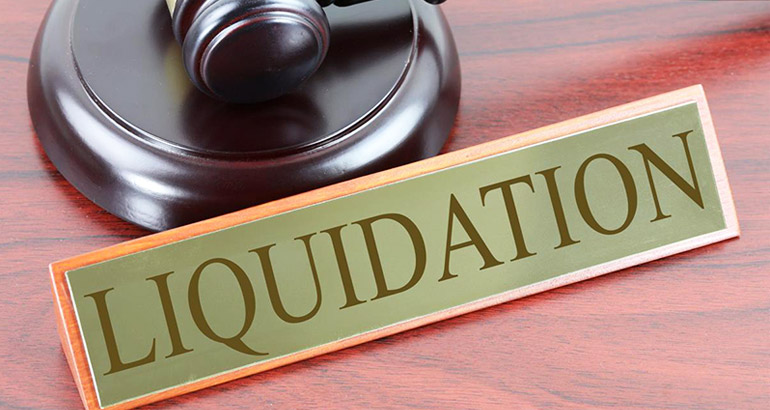The Greatest Guide To Company Liquidation
The Greatest Guide To Company Liquidation
Blog Article
Our Company Liquidation PDFs
Table of ContentsCompany Liquidation Fundamentals ExplainedRumored Buzz on Company LiquidationWhat Does Company Liquidation Mean?The 10-Minute Rule for Company LiquidationA Biased View of Company Liquidation
A liquidator is especially selected to oversee the ending up of a business's events in order for it to be shut down normally when the business is declaring bankruptcy. The liquidator is an objective 3rd party who manages the sale of firm assets in order to repay any outstanding financial debts.Their function consists of, but is not limited to: Neutral Overseer: A liquidator is charged with serving as an unbiased 3rd party to supervise the whole firm liquidation process. Develop Statement of Matters: Liquidators should create an extensive statement of events document. This record is distributed to lenders, describing the current financial standing of business at the time of its liquidation.
After the liquidation of a business, its presence is erased from Firms House and it discontinues to be a lawful entity. If supervisors navigated the process without problem, there would be no penalties or personal responsibility for firm debts expected. Now, with a clean slate, supervisors can discover brand-new company possibilities, though professional examination is advisable.
The Ultimate Guide To Company Liquidation
If even more than 90% of all business shareholders agree, liquidation can take location on short notice within seven days, the minimum legal notification for financial institutions. Usually, the larger the liquidation and the even more properties and resources the company has, the longer the process will take.

We understand that no 2 business coincide, which is why we will take the time to be familiar with your business so we can recommend the ideal strategy for you. We just operate in your benefits, so you can be absolutely certain in the solution we provide.
Little Known Facts About Company Liquidation.
In weblink the UK, there is a set process to shutting down or restructuring a limited business, whether it is solvent or insolvent. This procedure is understood as liquidation and can just be dealt with by an accredited insolvency expert (IP) according to the Insolvency Act 1986. There are 4 main kinds of company liquidation process: Creditors' Volunteer Liquidation (CVL); Compulsory liquidation; Management; and Members' Volunteer Liquidation (MVL).

In these situations, it is essential that the company stops trading; find out if the service remains to trade, the directors can be held personally responsible and it might lead to the bankruptcy professional reporting wrongful trading, referred to as misfeasance, which may cause legal activity. The directors assign an insolvency professional and when this has been concurred and validated, there is a meeting with the investors.
The supervisors are no much longer involved in what occurs, consisting of the sale of the firm's properties. If the supervisors desire any of the properties, they can alert the IP.
The smart Trick of Company Liquidation That Nobody is Talking About
The primary distinction is that the business's creditors related to the court for an ending up order which requires the financially troubled company into a liquidation process. Financial institutions take this activity as a last hotel since they haven't received repayment through other forms of settlement. The court appoints an insolvency specialist, likewise recognized as an official receiver, to conduct the mandatory business liquidation procedure.
This sort of business liquidation is not volunteer and directors' conduct is reported to the UK's Secretary of State once the liquidation procedure has been completed. Any kind of supervisor that falls short to comply with the IP or has been entailed in director misconduct, or a deceitful act, may find here result in major effects.
It is utilized as a means to protect the company from any type of legal action by its lenders. The supervisors of the firm agree to make routine payments to settle their financial obligations over a period of time.
Company Liquidation for Dummies
This supplies the firm with time to develop a strategy moving forward to save the business and stay clear of liquidation. At this point, supervisors hand control of the firm over to the appointed manager. If a firm is solvent yet the directors and shareholders desire to shut business, a Members Voluntary Liquidation is the right alternative.
The business liquidation procedure is handled by a liquidator selected by the directors and shareholders of the business and they need to sign a declaration that there are no creditors continuing to be. The liquidation process for an MVL resembles that of a CVL in that possessions are become aware but the earnings are dispersed to the directors and the shareholders of the business after the liquidator's costs have actually been paid.
Report this page